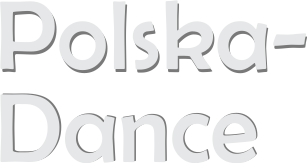
Due to Thatcherism and privatisation, Britain was out in the lead in the 1980s in reforming the government. Now, the Nordic countries namely Sweden, Denmark, Norway and Finland are assuming a similar role. A recent article in The Economist states that the next supermodel is the Nordic countries. It has been observed that these regions share much of a common history as well as traits in their respective societies and political systems. One such unique factor is their family of music and dance forms. The dance form shared by the Nordic countries is the Polska Dance. Polska is usually called ‘polsk’ in Denmark, ‘polska’ in Sweden and Finland and has many other names in Norway. Polska is a famous quiet Swedish dance whose steps are suspended and its movements are fluent and smooth. The unique characteristic of this dance is its complicity and relationship to the partner. Since Polska is the oldest dance collected in Sweden, it is considered as the ‘national dance’ of Sweden.
Though it is a dance form shared by the Nordic countries, Polska originated in Poland and hence, the Swedish name Polska meaning ‘polish’. More often, its roots are traced back during the early 17th century to the influence of the Polish court throughout the northern countries. Polska is assumed to be evolved from the Minuet and the Waltz. The origin of Polska had challenging views. However, though the dance is Swedish/Nordic, most of the steps performed come from Poland. With music being the same, there are certain differences between the Swedish Polska and the Nordic one. The former actually has its own version of Polska that differs from village–to–village while the latter is consistent and formal throughout the country.
An oldest dance of Sweden, Polska is composed of two parts, the procession and the turning point. The procession involves couples walking one behind the other in counter–clockwise direction. Mainly consisting of pivots and turns, Polska is danced in 3/4th beat or time. One turn takes about 3 beats to complete in a clockwise direction. However, despite being couple dance, men generally perform different steps. They do squats, leaps or cart wheels during different parts of the dance. Slower dance forms of Polska have a 6–beat turn instead of a regular 3–beat turn. The male dancer takes an initiative regarding the turns. It is he who goes in front of his partner and then comes back to the common direction. A stable rotation is allowed as the feet of the couple are between each other.
The structure of the Polska music usually has 4,6,10 measures at the end of the sentences. As its tempo is slow, the most prevalent instrument is the violin. Also, there are many other types of flutes such as the nikelharpa, clarinet and the bagpipes. However, today, the diatonic accordion is widely used.
The basic costume for women is a high–necked long–sleeved white blouse along with a tight fitting bodice. A bright shawl tucked in to the bodice is fastened at the neck. They wear a head dress, a skirt (plain or striped) with leggings and boots and a small vest. Men, on the other hand, wear breeches of yellow, black or dark blue colour which is tied below the knee with braids. They wear a striped sleeveless waistcoat that is buttoned to the neck with a white long–sleeved shirt. In addition to the heeled boots and a small hat, they wear a skirt with Russian dancing pants.
G Kowledge of | 0 Comments >>
0 Comments
Leave Comment
Your email address will not be published. Required fields are marked.